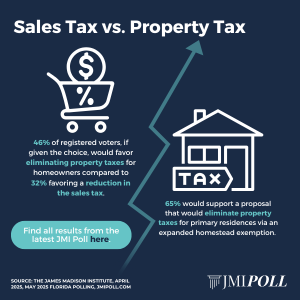A recent report showing the stark decrease in locations eligible for Broadband Equity, Access, and Deployment (BEAD) Program funds demonstrates the folly of the $42.5 billion in taxpayer money allocated to the initiative.
The analysis by the Advanced Communications Law & Policy (ACLP) Institute at New York Law School found that unserved or underserved locations have decreased by 57 percent across the United States since allocations were set in 2023. ACLP compared data from 46 states’ challenge processes to determine the decrease (New Jersey, North Carolina, Ohio, and Texas have yet to make their challenge process data available to the public).
States initially determined the locations eligible for BEAD funding that are unserved or underserved (the latter with no speeds above 100 Megabits per second download speeds and 25 Mbps upload speeds, the broadband definition as set by the Federal Communications Commission (FCC), largely from data from the FCC’s National Broadband Map. But, the map is still a work in progress (and not infallible), so the National Telecommunications and Information Administration (NTIA), which administers BEAD, created a challenge process allowing local governments, nonprofits, and internet providers to question the eligibility of locations.
In just two years (and before a single dollar has been distributed) more than half of the locations set to receive funding from BEAD are no longer eligible for the money. The decrease is dramatically different from state to state. South Carolina experienced the biggest drop, with 84 percent of its allocated locations now ineligible.
“This decrease highlights the significant progress that has been made to close the digital divide since BEAD funding amounts for each state were announced in June 2023. These gains stem directly from continued capital investment by [internet service providers] to extend networks and grant-funded projects via American Rescue Plan Act and Rural Digital Opportunity Fund,” ACLP report authors Michael Santorelli and Alex Karras said.
The study raises concerns of impending taxpayer waste. ACLP noted that billions of taxpayer dollars in ARPA grants were handed out after states completed their BEAD planning and conducted their challenge processes, increasing the “likelihood that some BEAD-funded projects could result in significant overbuilding.”
ACLP pointed out that New York used ARPA funds to subsidize significant overbuilding in the state’s Municipal Infrastructure Program, an initiative that the Taxpayers Protection Alliance (TPA) previously criticized for siphoning funds exclusively for government-owned (I,e, taxpayer-funded) networks.
Trump Administration appointees Commerce Secretary Howard Lutnick and NTIA Administrator Arielle Roth have both indicated a likelihood in shifting from Biden administration policies on the BEAD program, as TPA previously reported.
At his January 29 committee hearing, Lutnick indicated a desire to slow down and closely examine the administration of BEAD. “The BEAD program should operate efficiently and effectively to allow…Americans to get the benefit of the bargain that Congress intended,” he said.
Based on its report, ACLP recommends that NTIA develop mechanisms to ensure bids for BEAD projects reflect any existing grant-funded projects not already accounted for in a state’s challenge process.
“To the extent a bid would result in overbuilding locations that have since come under an enforceable commitment, then states must have processes in place to deduplicate these commitments in a timely manner,” Santorelli and Karras wrote. “This will ensure that BEAD funds remain laser-focused on closing the digital divide and prevent against wasting these resources on areas that are already served.”
The taxpayer waste from BEAD is already rearing its head. From workforce training to digitizing small businesses, Louisiana is shifting $500 million in surplus funds to a variety of digital projects unrelated to broadband deployment.
ACLP suggests that NTIA create a system that would allow any leftover funds be sent to other states, and also create more narrowly defined non-deployment uses by states.
The massive drop in BEAD-eligible locations is eye-popping and proves that the initial allocation Congress made for the program was much too great considering growing private investment and the myriad other state and federal broadband funding initiatives. NTIA needs to take a hard look at BEAD reform so that taxpayers see their money spent wisely in the quest to close the digital divide.
Johnny Kampis is director of telecom policy for the Taxpayers Protection Alliance













